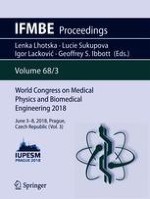2019 | OriginalPaper | Buchkapitel
Development of 3D Printed Phantom for Dose Verification in Radiotherapy for the Patient with Metal Artefacts Inside
verfasst von : Diana Adlienė, Evelina Jaselskė, Benas Gabrielis Urbonavičius, Jurgita Laurikaitienė, Viktoras Rudžianskas, Tadas Didvalis
Erschienen in: World Congress on Medical Physics and Biomedical Engineering 2018
Verlag: Springer Singapore
Aktivieren Sie unsere intelligente Suche, um passende Fachinhalte oder Patente zu finden.
Wählen Sie Textabschnitte aus um mit Künstlicher Intelligenz passenden Patente zu finden. powered by
Markieren Sie Textabschnitte, um KI-gestützt weitere passende Inhalte zu finden. powered by
